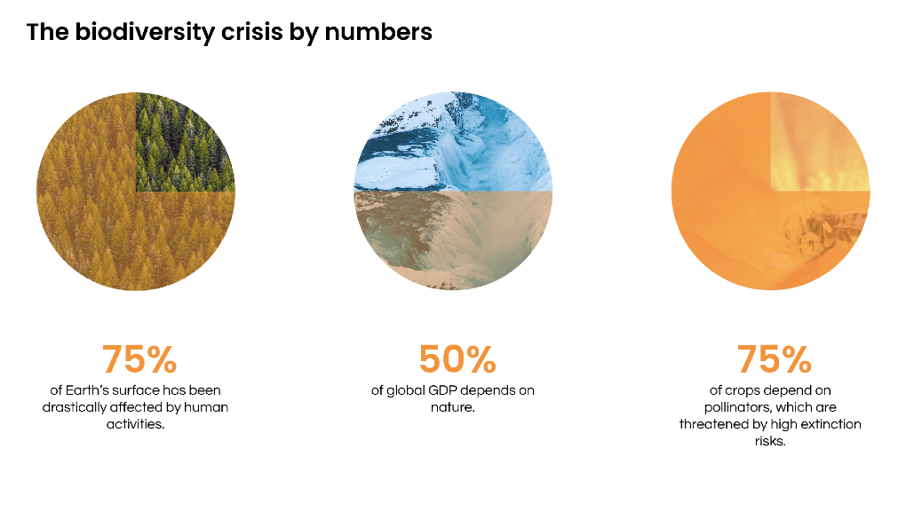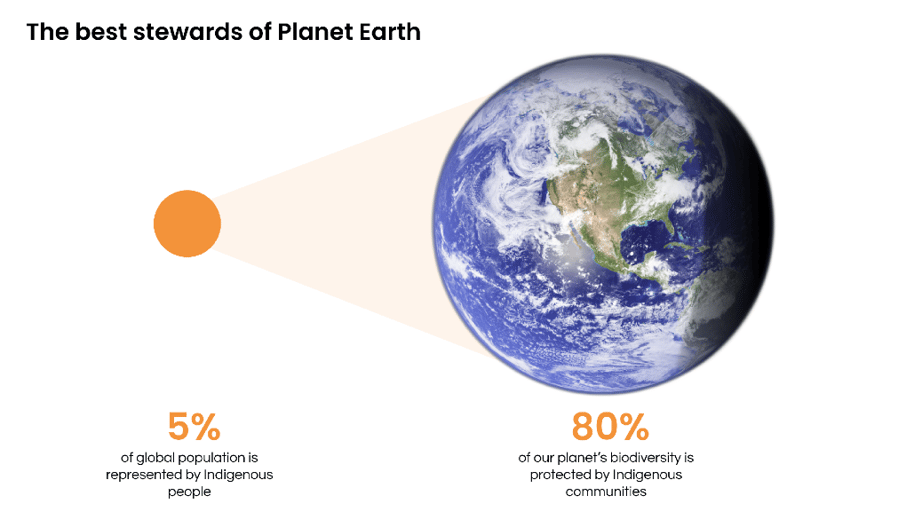Plan(et) A: The Striking Outcomes of COP15
-1-1.png)
The UN Biodiversity Conference (COP15) just wrapped up last Monday after 2 weeks of negotiations in Montreal, Canada.
After speculating on the potential outcomes of the Conference in our last biodiversity article, we’re happy to follow up with some positive news.
In fact, COP15 resulted in a striking agreement to protect nature and reverse biodiversity loss.
Some defined it as a once-in-a-decade deal to halt ecosystems’ destruction. Others called it a milestone for nature.
The content of the Kunming-Montreal Agreement is such a landmark deal that has even been compared to the Paris Agreement. So, let's dive in.
Some numbers to frame the biodiversity crisis
As already stressed in a previous article, the Living Planet Index developed by the WWF marks a 69% decrease in wildlife populations between 1970 and 2018.
Additionally, based on the IUCN Red List almost 30% of mammals are in danger of extinction. Moreover (European Commission, 2022):
- Human activities have drastically changed ¾ of the Earth’s surface;
- Half of the global GDP depends on nature;
- 1 million species are at risk of extinction;
- 75% of crops depend on pollinators. Nevertheless, extinction rates of the latter are 100 to 1000 times higher than normal due to human impacts (FAO, 2022).

However, it’s not all doom and gloom. For example, conservation action plans saved 48 species from extinction.
Not all is lost, and we still can (by acting quickly) reverse the previous daunting trends. This is exactly what the Kunming-Montreal deal aims to achieve.
The Kunming-Montreal Agreement to protect our planet
Approved by 188 governments, this ground-breaking deal puts us on the trajectory for a sustainable relationship with nature.
The deal is hinged on four overarching global goals. The progress on those is tracked through 23 targets.
In particular, the goals aim to:
- Restore ecosystems and biodiversity by 2050;
- Recognise the value of ecosystem functions and services. Additionally, ecosystem services currently in decline need to be restored by 2050;
- Assess the benefits society derives from the use of genetic resources;
- Ensure equal access to all Parties to financial resources and technology to fully implement the Kunming-Montreal Agreement.
While not legally binding, signatory countries will show their progress on targets on a regular basis through biodiversity plans.
Before the next COP in 2024, the Parties need to prepare or update their National Biodiversity Strategies. The presented plans will be evaluated to assess if national actions are in line with 2030 and 2050 targets.
Within the EU, the global deal feeds perfectly into the Nature Restoration Law, adopted by the European Commission this past June.
What has been achieved in Montreal
Consistent with the above-mentioned goals, COP15 resulted in the following main outcomes.
The 30x30 target
By 2030 the deal aims to:
- Restore 30% of degraded terrestrial and sea ecosystems;
- Conserve and manage 30% of our planet’s surface;
- Reduce pollution risks and the negative impacts it manifests on biodiversity and nature.
On top of that, the deal includes targets to:
- Reduce nutrients lost to the environment by at least 50% by 2030;
- Reduce risk from pesticides by at least 50% by 2030;
- Cut by ten times the extinction rate of all species by 2050.
Conservation champions
In the final version of the Agreement, Indigenous people are in the spotlight. This finally recognises them as conservation champions of Earth’s ecosystems.
In fact, despite representing only 5% of humanity, they protect 80% of our planet’s biodiversity.

COP15 deal stresses the importance of adopting Indigenous-led conservation models to protect our planet. They prove to be the most effective in biodiversity protection.
This goes hand in hand with placing a halt to unrighteous abuses, violence and land sequestration, often suffered by Indigenous communities.
No more harmful subsidies
The Agreement aims to phase out harmful subsidies by 2030 by at least $500 billion per year.
Other than that, the Kunming-Montreal Agreement aims to direct finance towards projects with positive impacts:
- At least $200 billion per year by 2030 will have to be directed to support biodiversity restoration and protection;
- The Global Environment Facility (GEF) will manage a new fund to collect resources to finance conservation projects;
- International financial flows from developed to developing countries must increase to:
-
- At least $20 billion per year by 2025;
- At least $30 billion per year by 2030.
The implications for the private sector
You might be wondering what the deal could mean for your organisation.
The Agreement aims to enhance private sector involvement in reversing the biodiversity crisis.
To do so, it encourages the development of sustainable management practices, with particular attention to the following industries:
- Agriculture;
- Aquaculture;
- Fisheries;
- Forestry.
Besides, it creates incentives to direct business investments towards projects that have a positive impact on nature through subsidy reform.
Lastly, mandatory risk assessment and disclosure on biodiversity impacts will be introduced for large international companies and financial institutions.